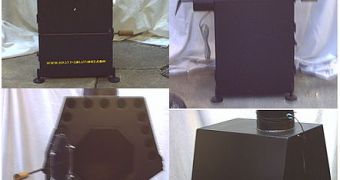The companies behind KALA innovative stove plan to change the key elements in the lives of poor inhabitants, putting an end to open fires for cooking purposes, known as a tremendous source of indoor pollution.
It is now a fact that the lives of almost 3 billion people from developing countries depend on empiric cooking processes that speed up their death in most of the cases.
The officials behind KALA project are eager to present an innovative stove, easy to use and maintain and also very efficient and eco-friendly when it comes to the amount of emissions it produces, following both a reduction of the fuel demand and a lower ecological footprint, reports GreenDiary.
In order to change the fate and the behavior of exposed inhabitants, the program supports a powerful stove that will provide more energy while relying on a lower amount of fuel, with no harming effects upon the environment and the wellbeing of the entire population.
Manufacturers announced the birth of this innovative product in Pondicherry, South India, due to a successful collaboration between Design Lab, an Indian engineering firm, and GIC.
The innovation has already been implemented in South Indian canteens and restaurants and it has crushed the competition, in terms of power and utility. Its success relies on a larger combustion chamber that can store more wood than its traditional rivals.
The metal-based cooker follows two combustion principles. In the first chamber wood is burned and the gases emitted are mixed with preheated oxygen and are completely burned into a second combustion chamber.
All in all, the entire process is much more efficient than previous attempts, due to the fact that it manages to provide boiling water in only 34 minutes, compared to the competitor's record of 134 minutes.
The product is not only eco-conscious, it is also fuel-efficient since it requires only 55% of the fuel previously demanded. In terms of design, its manufacturers made it user-friendly so that a larger segment of the poor population will be able to understand and explore its beneficial usage.
In order to make KALA implementable, they focused on performance, technical and aesthetic values.
At this point in time, it appears that the companies' efforts have paid off, as the innovative product is used on a large scale. Following the same trajectory, its implementation might decrease the mortality rates in developing countries, correlated with indoor pollution.

 14 DAY TRIAL //
14 DAY TRIAL //